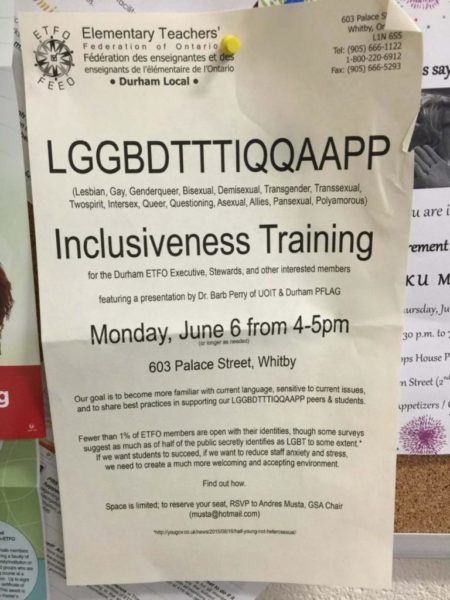Until a few years ago — a blink of the eye in social terms — most individuals who wanted to transition to the other gender were born male. That is no longer the situation in North America, as vast numbers of young teens have been hammered with accusations of “privilege” for being white, while already undergoing the stresses and social disruption of puberty, seem to be deciding in groups that they must have been “assigned the wrong gender” at birth. In City Journal, Leor Sapir tells some of their stories:
Patricia (a pseudonym) is the mother of a teenage girl who in recent years has come to identify as transgender. She lives in California, considers herself progressive, votes Democrat, and leads a group for parents of children with rapid onset gender dysphoria (ROGD) — that is, youth who suddenly experience distress with their bodies and believe that undergoing medical “transition” will make them whole again. When I spoke to her recently, she recounted how her daughter’s at-first-lesbian and then trans identity emerged in response to feelings of shame about being white.
I have since spoken to more than a dozen ROGD parents and parent-group leaders who tell a similar story. Their schools compulsively tell their children how awful it is to be white, how white people enjoy unearned “privilege”, how they benefit from “systems” put in place by and for white people for the sole purpose of oppressing “people of color”. Plagued by guilt, the children — almost all of them girls — rush to the sanctuary of “LGBTQ+” identity. Once there, they are catapulted into hero status. According to Patricia, some teachers at her daughter’s school are more forgiving toward “queer” and “trans” kids who hand in their homework late.
The students, especially the girls, absorb this messaging. They are acutely sensitive to how identity affects their social status and academic fortunes. They want the warmth that comes with queer/trans identity, but above all they don’t want to be thought of as vicious oppressors. Lacking maturity and self-confidence, they fail to put “anti-racist” indoctrination in its proper context. They do not appreciate its ahistorical, anti-intellectual, and anti-humanist foundations, nor are they aware of the incentives leading teachers and administrators to foist it on them. Being white is not something these teenagers can escape, but they can mitigate its social costs by declaring themselves part of an oppressed group.
The wages of whiteness for teenagers are, however, only half of the story. Decades of gay rights activism have taught us that being gay or lesbian is not something one chooses. The mainstream narrative of transgenderism — promoted aggressively in the context of civil rights policymaking — holds that even being transgender is something people have little control over. Gender identity, experts have argued in Title IX lawsuits, is innate, immutable, and “primarily dictated by messages from the brain”. Thus, membership in the “LGBTQ+ community” would seem to be nonvoluntary. One is either “born that way” or not.
[…]
Several of the parents I spoke to told me that their daughters’ friends all identify as non-heterosexual, despite none having ever kissed another teenager or been in a romantic relationship. LGBT identity is, for them, not related to sexual attraction or behavior. As Kate Julian has written in The Atlantic, America is going through a “sex recession”. Whereas in 1991, most teenagers would have had at least one sexual encounter by the time they graduated high school, by 2017 most had had none. The vacuum left by the hollowing out of courting and relationships has been filled, so it would seem, by a new, inward form of “sexuality” in which the sexual side of our nature is purely a private experience. The 1960s sexual-liberation movement has somehow bred asexual atomism.




